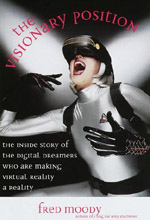 (Reprinted with permission from The Wall Street Journal, written by Rich Jaroslovsky)
(Reprinted with permission from The Wall Street Journal, written by Rich Jaroslovsky)
As a technological vision, virtual reality is right up there with the big ones. Already a staple of popular culture—think of Captain Picard’s holodeck on “Star Trek”—the notion of using technology to meld nature and artifice has danced elusively just beyond the grasp of science for decades.
When it comes to the role of the virtual reality visionary, few people are more qualified than Tom Furness. A former Air Force officer whose dreams of space flight were denied by poor eyesight, Furness spent two decades in defense research. He became a pioneer in data visualization, designing ways for military pilots to keep track of the complex streams of information emanating from their high tech instrument panels without at the same time losing contact with the harsh realities of sky, ground, and gravity.
Eventually, Furness gravitated to the University of Washington, where he founded the Human Interface Technology Laboratory (HIT). Fueled and funded in large measure by its charismatic founder’s ability to sell his vision to the press and corporate sponsors, HIT created an atmosphere that both attracted and eventually repelled some of the brightest scientific talent in the realm of virtual reality. In The Visionary Position, journalist Fred Moody provides an often engrossing, sometimes horrifying fly-on-the-wall account of the men, the women, and the work of VR.
For its first hundred or so pages, The Visionary Position follows Furness and his team as they attempt to take VR from the expensive and sophisticated realm of jet trainers and gigantic prototype helmets to consumer applications such as Disney rides and headsets that can be worn in conjunction with video games. We follow in engrossing detail as the HIT scientists struggle with the challenge of scanning video displays directly into the eye’s retina, inducing the uncanny sensation of being totally immersed in the environment being created. Images appear in three dimensions; and because the entire retina is used for a screen—we focus with only part of the retina when viewing reality —they completely fill the eye. No wonder Timothy Leary pronounced virtual reality “electronic LSD”—a blessing the technology has yet to fully escape.
Moody does a good job of making the science more or less understandable to the layman. As a story of technologists at work, we’ve been here many times before—most memorably in Tracy Kidder’s 1991 The Soul of a New Machine. But the eccentricities of Kidder’s band of minicomputer engineers pale next to those of the HIT team. One engineer—male and heterosexual—habitually shows up at the lab in a dress; another piles computers and furniture in the middle of a room to block colleagues’ access and indulges in fantasies in which he is variously a pirate or Godzilla. (“I am vast! I romp and stomp and devour small planetoids!”)
But as the cast of characters disperses to various Seattle-area startups—either frustrated with the continual cash and personnel crises at HIT or lured by the prospect of stock options and personal riches—The Visionary Position takes an abrupt turn. Now tales of corporate horror dominate the narrative clashes between, on the one hand, the dreamers and visionaries, with their desire to continually push the boundaries of the technology, and, on the other, the venture capitalists and company executives, obsessed with shipping product and making a profit.
Ultimately, the book’s landscape is littered with the carcasses of failed or failing companies, even as the technology itself develops apace. In this way, the book is an interesting parallel to the current mania over the Internet. That the technology is really as important as everyone says it is tells nothing about which companies that apply it will succeed.
Unfortunately, for all the sophistication of Moody’s reporting, the conclusions he draws are grossly oversimplified. He sees his story at heart as a clash of white hats (the inventors and developers) and black hats (business people, who are largely portrayed as fools or knaves bent on cheating the visionaries out of the fruits of their dreams).
Yet the book’s final glimpse of Tom Furness is not of a scientist devoured by the forces of darkness. Instead, we find him spinning yet another spellbinding vision before a dazzled audience at Boeing. This one is a proposal for a “Starfleet Academy,” in which visitors to the company’s museum would don VR headsets and sit at the controls of a mockup of Star Trek’s Starship Enterprise—at a cost, one suspects, well beyond the $1.4 million price tag he suggests. In the tug of war between science and commerce, it is fair to ask just who is seducing whom. At the very least, the seduction is mutual.